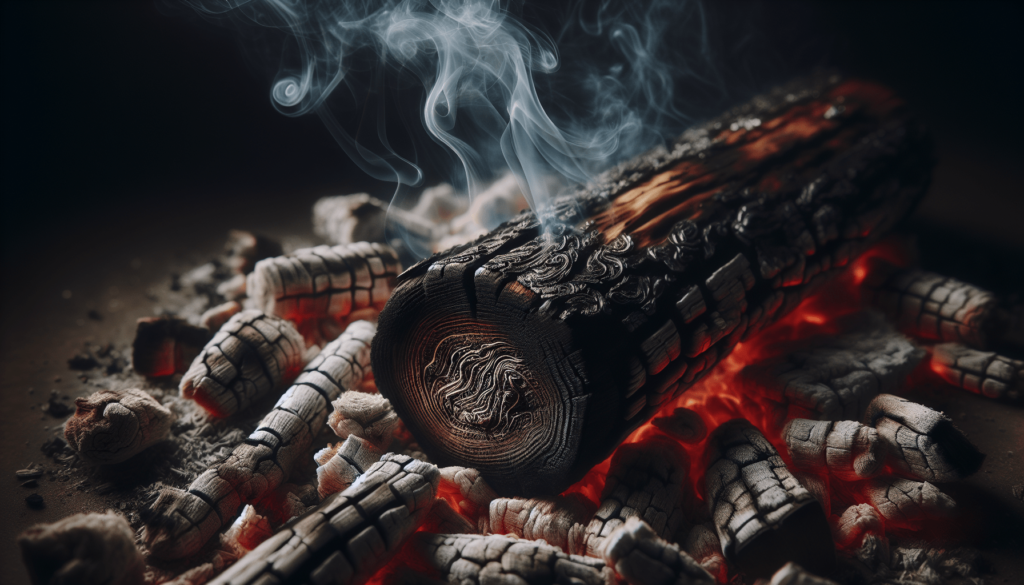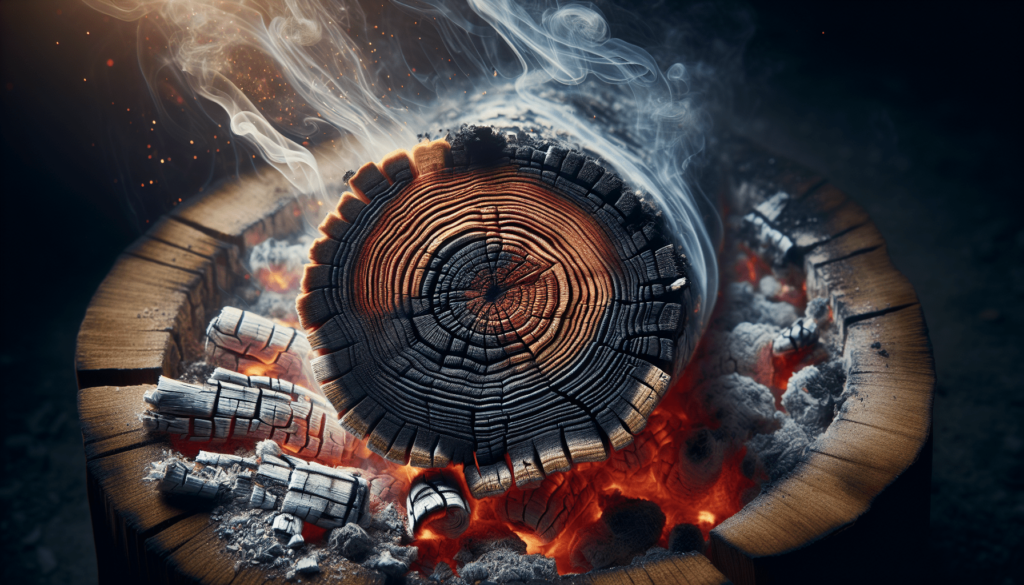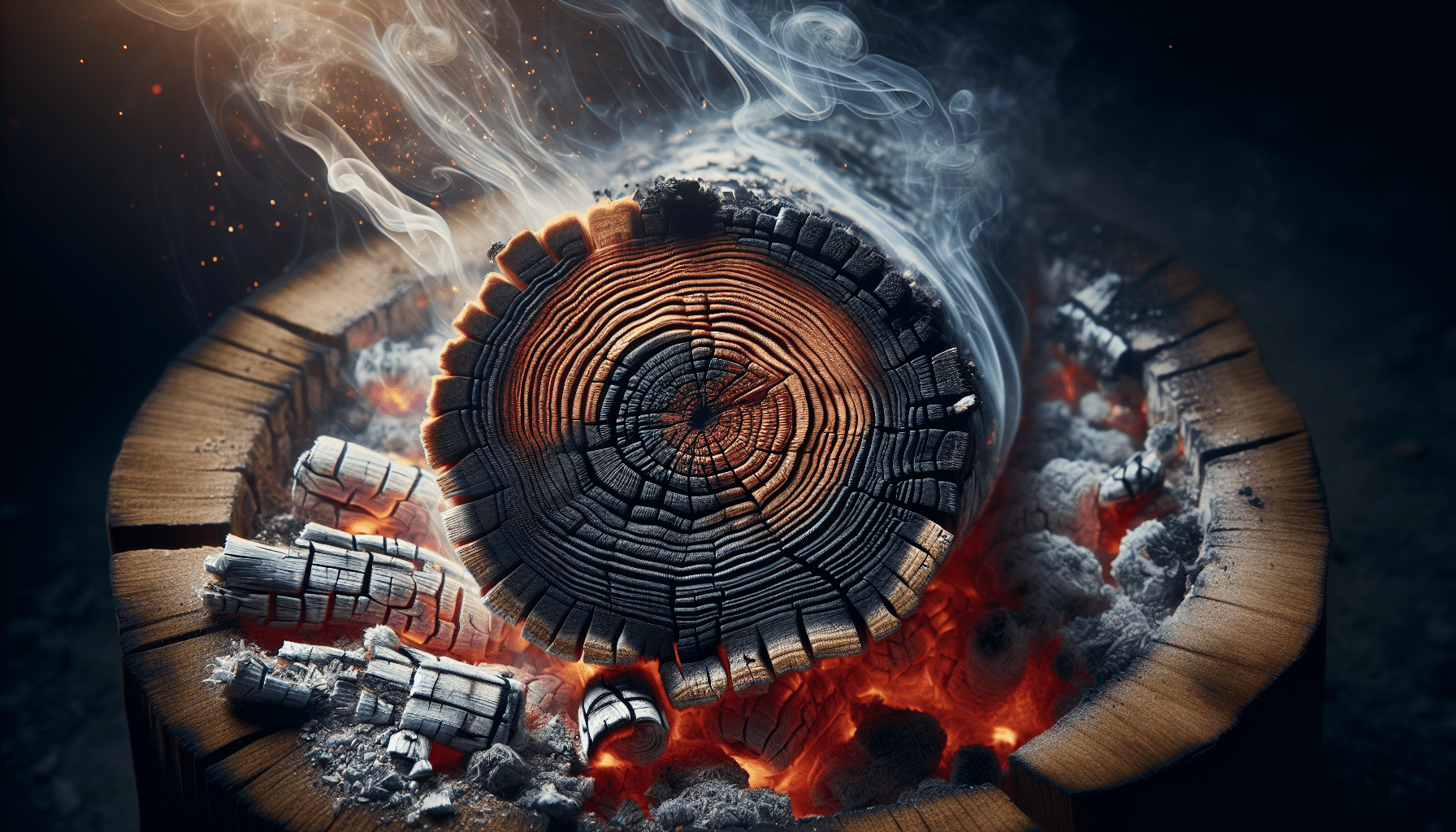What do you call it when you burn wood? It might sound like a simple question, but it’s one that has layers of complexity. I mean, ever sat by a campfire and just watched the flames dance, the wood crackle, and the smoke rise into the night sky? It’s mesmerizing. And while we often refer to it as “burning wood,” there’s actually a lot more going on.
The Process of Burning Wood
Burning wood scientifically is referred to as combustion. But before I get all technical, let’s break it down. When you toss a log onto the fire, you’re not just setting it alight. The wood undergoes a transformation that’s part science and part magic.
Combustion: A Breakdown
Combustion is a chemical reaction, essentially a more elaborate term for burning. When wood burns, it reacts with oxygen in the air (a process called oxidation), producing heat, light, carbon dioxide, water vapor, and a slew of other gases.
| Stage | Description |
|---|---|
| Ignition | This is when the wood first catches fire. A spark or match gets things started. |
| Combustion | The wood reacts with oxygen, producing heat and light. |
| Pyrolysis | Wood breaks down into volatile gases and leaves behind charcoal. |
| Afterglow | The last stage where the remaining wood turns to ash. |
The Ignition Stage
In those initial moments, when you just strike a match and touch it to a piece of wood, the temperature rises. The heat causes the wood to dry out as moisture evaporates. If you’ve ever tried lighting damp wood, you know it’s an exercise in frustration. That water needs to be out of the picture first.
Combustion Proper
This is where things get vivid. The wood starts to break down, releasing volatile gases while the solid remains turn into char. At this point, visible flames appear, fed by the gases released from the pyrolysis stage.
Pyrolysis: The Breakdown
Pyrolysis sounds like something you’d see in a sci-fi movie, but really, it’s just the wood decomposing when exposed to high temperatures. Here, organic materials break down into solid residue (also known as char) and volatile gases, which are what you actually see as flames.
Afterglow and Ash
Finally, the party winds down. The remaining carbon material, now charcoal, continues to burn until all that’s left is ash. This is a slower, less intense burn, often leaving glowing embers in its wake.
Different Types of Wood and Their Burning Characteristics
Not all wood burns the same way. Just like people, each type of wood has its own personality.
Hardwood vs. Softwood
| Type | Examples | Characteristics When Burning |
|---|---|---|
| Hardwood | Oak, Maple, Birch | Burns hotter, longer and produces more ash. Denser, takes longer to ignite. |
| Softwood | Pine, Spruce, Cedar | Burns faster, produces more smoke and soot, easier to ignite. |
Hardwood
Hardwood trees like oak and maple have denser wood fibers. This type of wood burns hotter and longer compared to softwoods. Ever notice how a good hardwood fire can keep you warm through a cold winter night without needing constant tending? That’s because hardwoods are the slow-burn specialists of the wood world.
Softwood
Softwoods like pine and spruce, on the other hand, are the sprinters. They catch fire easily and burn fast, making them great for kindling to get your fire started. But you might find yourself constantly feeding the flames because they don’t have the lasting power of their hardwood cousins.

Chemical Reactions Involved in Burning Wood
Beyond just ignition and combustion, there’s a lot of chemistry happening when wood goes up in flames. Get your lab coat out—it’s about to get interesting.
Primary Reactions
The main reactions are between the carbon and hydrogen in the wood with the oxygen in the air. These reactions produce carbon dioxide and water vapor, which are usually invisible but can become visible as steam when the temperature is right.
Secondary Reactions
Besides the primary reactions, there are secondary ones involving other compounds in the wood. For example, the presence of nitrogen can lead to the formation of nitrogen oxides, contributing to that characteristic wood-smoke smell.
Byproducts of Burning Wood
Burning wood isn’t just about heat and light. It produces a range of byproducts, and understanding these can help you appreciate the complexities involved.
Solid Byproducts
The solid byproducts are ones you can see and touch, like ash and charcoal. Ash is what’s left after all the volatile components have burned off. It’s mostly mineral content and can often be used as a soil amendment in gardening.
Gaseous Byproducts
The gaseous byproducts are a bit sneakier. These include carbon dioxide, water vapor, and sometimes a bit of carbon monoxide if the combustion is incomplete. Trace amounts of other gases like methane and formaldehyde can also be released, contributing to that smoky aroma.
Particulates
These tiny particles are why you sometimes get teary-eyed around a campfire. They can be harmful if inhaled over long periods, but in small doses, they’re mostly just an inconvenience. These particulates are why modern wood stoves and fireplaces often come with elaborate filters and systems to manage emissions.

Environmental Impact of Burning Wood
Alright, let’s address the elephant in the room. What happens to the environment when we burn wood?
Carbon Footprint
Contrary to what you might think, burning wood can be relatively carbon-neutral. Unlike fossil fuels, the carbon dioxide released from burning wood was absorbed from the atmosphere during the tree’s lifetime. That said, it’s still crucial to source wood responsibly to maintain this balance.
Air Quality
Burning wood produces smoke, which can affect air quality. In some areas, burning wood is regulated, especially during certain times of the year. Particulates and pollutants from wood smoke can contribute to respiratory problems and other health issues.
| Aspect | Impact |
|---|---|
| Carbon Footprint | Moderately sustainable when sourced responsibly. |
| Air Quality | Can contribute to air pollution and health issues if not managed properly. |
| Resource Use | Requires sustainable forestry practices to avoid deforestation and habitat loss. |
Resource Use
Harvesting wood for burning must be done sustainably. Overharvesting can lead to deforestation and habitat loss for various species. Sustainable forestry practices and sourcing wood locally can help mitigate these issues.
Practical Tips for Burning Wood Efficiently
Knowing the science behind wood burning is all well and good, but how about some practical advice? Whether you’re heating your home or just enjoying a backyard fire pit, efficiency is key.
Choosing the Right Wood
As mentioned earlier, hardwoods are excellent for long-lasting fires, while softwoods are great for getting things started. If you can, use a mix of both to get the best of both worlds.
Seasoning Your Wood
Seasoned wood is wood that has been dried to reduce its moisture content. Ideally, you should allow your wood to season for at least six months. Wet or green wood doesn’t burn efficiently and produces more smoke.
Proper Ventilation
Proper airflow is crucial for efficient burning. Make sure your fireplace or fire pit is well-ventilated to ensure a steady supply of oxygen to the flames. This not only makes for a better fire but also reduces smoke.
Using Modern Technology
Many modern stoves and fireplaces come with features designed to improve efficiency and reduce emissions. Things like catalytic converters and air wash systems can make a significant difference in how cleanly your wood burns.
Safety Tips for Burning Wood
Burning wood isn’t just about science and efficiency—it’s about staying safe, too. Here are some pointers to keep you out of trouble.
Fire Safety
Never leave a fire unattended. Whether it’s in a fireplace or a fire pit, always keep an eye on the flames. Use a screen to contain sparks and never overload your fire with wood.
Chimney Maintenance
If you’re using a fireplace, regular chimney maintenance is a must. Creosote, a byproduct of burning wood, can build up in your chimney and pose a fire hazard. Professional cleaning annually is advised.
Carbon Monoxide
Incomplete combustion can produce carbon monoxide, a dangerous gas. Make sure your home is equipped with carbon monoxide detectors and ensure good ventilation to avoid buildup.
The Science of Wood-Burning Stoves and Fireplaces
Mentioning modern technology got me thinking—it’s incredible how far we’ve come. Today’s wood-burning stoves and fireplaces are marvels of engineering designed to improve efficiency and safety.
Catalytic Converters
Some advanced wood stoves come with catalytic converters that help reduce smoke and increase efficiency. These devices force the gases and smoke to pass through a coated ceramic honeycomb catalyst, which burns off remaining particulates and gases.
Air Wash Systems
Ever notice how the glass on some wood stoves stays remarkably clean? That’s thanks to air wash systems, which direct a flow of air across the glass to keep soot from sticking. It’s a small touch that makes a big difference in your experience.
Energy Efficiency
Modern stoves are built with efficiency in mind. Many can achieve efficiency ratings of 70-80%, far higher than older models. This means you get more heat from less wood, making your stash last longer and reducing the environmental impact.
The Cultural Aspect of Burning Wood
Beyond the science and practicality, burning wood is deeply embedded in our culture. Think about it—has there ever been a more enduring symbol of warmth and togetherness than a roaring fire?
Historical Significance
Since ancient times, humans have gathered around fire for warmth, cooking, and community. Fire has shaped human development, influencing everything from migration patterns to social structures.
Modern Rituals
Today, we continue to gather around the fire. Whether it’s a campfire, a fireplace in your living room, or a wood-burning stove, fire continues to bring people together. There’s something primal and comforting about it that transcends generations and cultures.
Symbolism
Fire isn’t just about heat; it’s symbolic. It represents warmth, safety, and even home. When we gather around a fire, we’re not just keeping warm—we’re connecting with an ancient human tradition, a thread that ties us to our ancestors.
Common Myths About Burning Wood
Like anything with a history, burning wood comes with its share of myths and misconceptions. Let’s debunk a few, shall we?
Myth 1: Hardwoods Are Always Better
Remember our bit on hardwoods and softwoods? While hardwoods do burn longer, they’re not always the best choice for every situation. Using a mix of hardwood and softwood can provide the best balance of easy ignition and long-lasting fire.
Myth 2: All Smoke Is Bad
While excessive smoke isn’t great, a certain amount is inevitable and even desirable. The smell of wood smoke is often a big part of the appeal. It’s incomplete combustion and the release of harmful particulates that are problematic.
Myth 3: Green Wood Is Useless
Green wood, or wood that hasn’t been seasoned, is harder to burn and less efficient, but it’s not entirely useless. In a pinch, mixing green wood with dry wood can help stretch your supply. It just takes a bit more effort to get it going.
Conclusion: The Beauty and Complexity of Burning Wood
So, what do you call it when you burn wood? The simple answer is combustion, but as we’ve seen, it’s so much more than that. From the science of chemical reactions to the cultural significance, burning wood is a multifaceted process that has captured human fascination for centuries.
Whether you’re a seasoned firestarter or a curious newbie, knowing the ins and outs of burning wood can make the experience even richer. So, the next time you find yourself by a fire, you’ll have a deeper appreciation for the warmth and light it provides—and all the complex processes making it possible.
And let’s face it, who doesn’t love a good fire?

